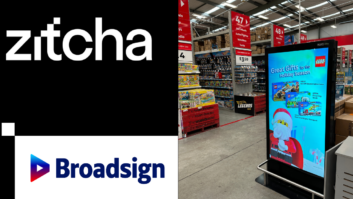
Rob Lane reveals the challenges for the high street and integrators brought by the retail revolution.
It’s no (Victoria’s) secret that retail is undergoing a period of major change, as the Internet continues to influence how we shop, and retailers with a stake in the high street rush to come to terms with what this means for their stores. Perhaps what some in the retail and AV industries have failed to grasp is just how fast and hard this pace of change is becoming; it’s unstoppable and continues to accelerate as we approach the 2020s.
Influential retail commentator Walter Loeb recently wrote in Forbes that retail is “undergoing a revolutionary change” and it’s hard to disagree. Loeb believes that in order to survive, retail must accept the influence of technology, the sort of technology that makes shopping easier. In other words, not tech for tech’s sake – something that undermined AV technology’s early steps into stores, where it either didn’t work or was ultimately moribund and unloved (remember all those blank flatscreens?).
Loeb believes the use of technology will soon exceed current expectations (tablets, touch displays, beacons) to take in robotics, AI and personal recognition – initiatives designed to combine the excitement of shopping online with a more touchy-feely in-store experience.
“Retail is a dynamic industry that is always changing,” Loeb explains in Forbes. “Technology is reshaping how consumers shop. Retailers that resist the changes coming about will not survive. Those that embrace technology and let the consumer be in charge will thrive.”
Internet influence
This is a hugely important point. The influence of the Internet on high street outlets means that the customer is, more than ever, right. In the UK in particular, many of us feel uncomfortable when we are approached with a heart-sinking “Can I help you”; there’s no better way of dampening our shopping ardour. And even for those countries where shoppers have always been more than happy to be approached by shop staff, the US springs to mind, the Internet has forever altered the way we engage with the shopping experience.
But alongside his doom and gloom analysis, Loeb champions stores such as Macy’s and Nordstrom’s, which have integrated magic mirrors and smart fitting rooms into stores, with the latter also bringing in-store personal shopping onto the web, and predicts a resurgence of high street shopping by 2020, including more outlets from Internet-based retailers.
Why? Well, presumably we’ll all start to feel more comfortable shopping away from our devices again, as retailers start to get the mix of physical-meets-Internet-meets-tech right. But what else, apart from avoiding asking customers if they need help, should retailers be doing to keep the high street alive?
Use and benefit
First of all, as mentioned above, technology should have a use and a benefit. Any tech should be relevant to customers and staff and should avoid the lowest common denominator. For instance, displays shouldn’t merely show video (or, perish the thought, stills!); they should incorporate sound, lighting and touch too. They should probably also react in some tangible way to the consumer’s presence, as well as feeding back and suggesting other purchases – all without being too pushy or too obviously targeting.
This latter point is one of the biggest challenges facing retailers: how to utilise data in the same way it is utilised online – to suggest products based upon somebody’s buying history, for instance – in store, without pissing people off.
Technology should enhance the shopping experience rather than complicate it. The online journey must continue in store (and vice versa), rather than crunching to a halt at the door, where the branding isn’t familiar (i.e. the same as online) and there are no smart technologies to bridge the gap between device and store.
This is where window display tech is crucial, to bridge the aforementioned gap, while enticing people into stores at the same time as keeping their backs to the competition on the high street. But again, there must be a reason why there’s a display in the window, and an interactive element to replicate the online experience and provide reasons for people to actually step in store. This highlights the importance of robust, all-weather interactive touch displays and new in-window touch technology (as demonstrated in the world’s first see-through touchscreen store front, at Helsinki’s Kelevala flagship store).
Technology, and the need to integrate it in an intelligent and meaningful way, is essential to retail’s future. AV integrators need to ensure they’re up to speed with what’s important now and in the future if they’re to take their slice of the retail pie.







